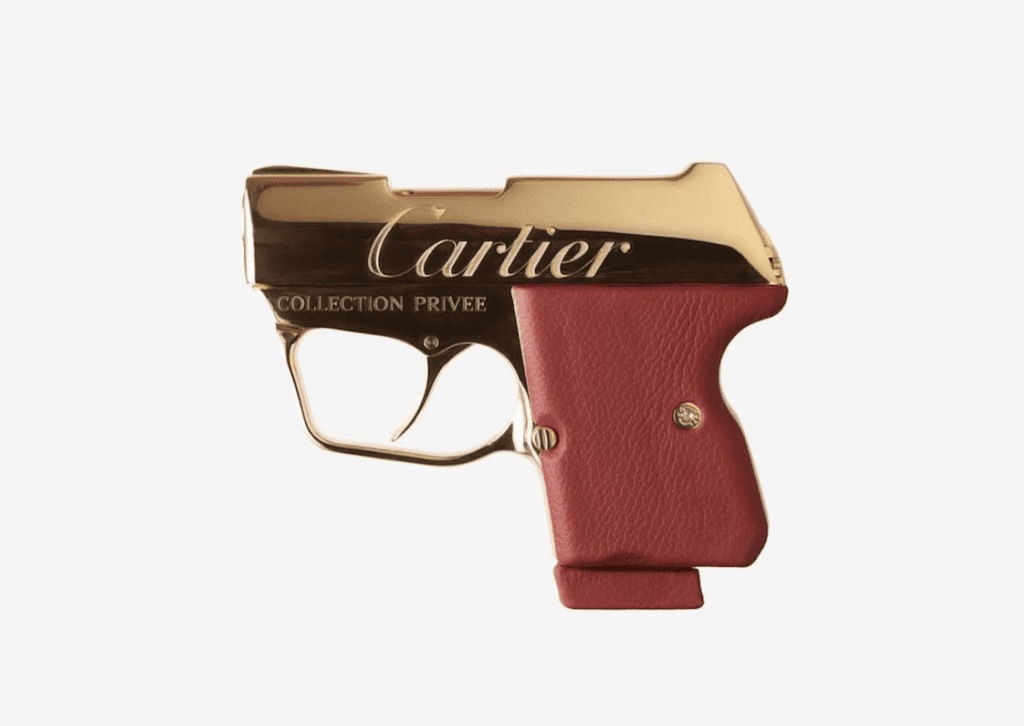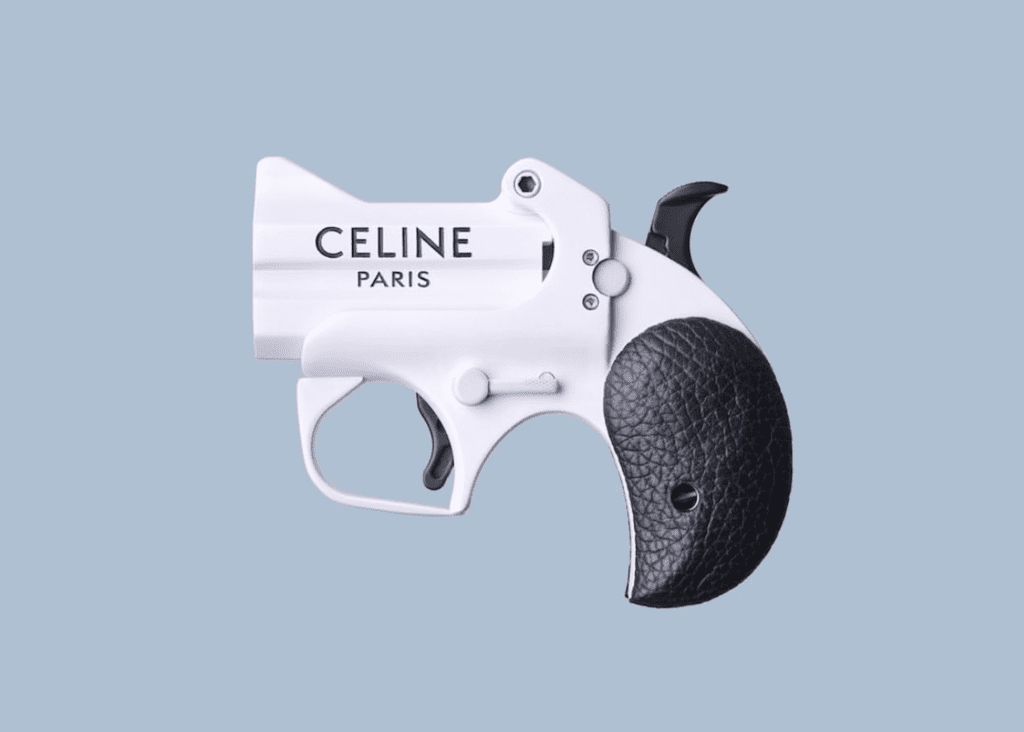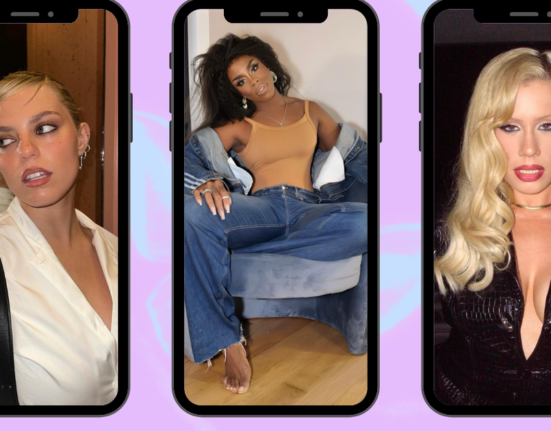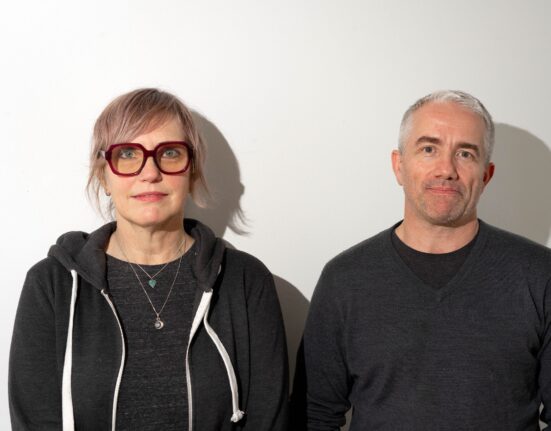A new battle has just begun between behemoth luxury hotel chain Dorchester Collection and artist Daniel Justin Ownsby. Ownsby has been producing limited-edition fine art prints with a firearm motif since 2022, featuring notable brands from designer retailers to the Beverly Hills Hotel. Fine art artists are no strangers to the battle of protecting their First Amendment against large corporations’ intimidation tactics. A pivotal act empowered artists in 1976 with the Fair Use disclaimer. Fair Use is a doctrine in the United States copyright law that allows limited use of copyrighted material without requiring permission from the rights holders, such as for commentary, criticism, news reporting, research, teaching, or scholarship.![]()
![]()
It has become popular among his nearly 34,000 fans on Instagram and has been selling well with both of his galleries, Kitson Beverly Hills and Trimper Gallery, in Connecticut. Earlier this week, his galleries received cease and dissent letters demanding that all prints be removed from the galleries for sale immediately. As of now, Ownsby’s livelihood is at risk because the work is his latest and best-selling work thus far in his series.
Owensby is a fine art photographer and conceptual artist based in California. He began the art series “Power” in late 2019 to explore objects and symbols in our culture that signify power. One part of this series is modifying working pistols into the visual style of known luxury brands.
“In art, guns are a useful symbol, and I was inspired by Warhol’s use of commercial imagery and his pistol photographs. These artworks have been quite well received by the public. The guns are photographed without context on a solid gray background. The gun is shown simply as a gun with no person and not in any action,” remarks Ownsby. The irony of the series title “Power” and the fact that the Dorchester (parent company of the Beverly Hills Hotel) is apropos and deliciously funny.
One of these pistols is the “Beverly Hills 1911,” a 1911 model Dan Wesson pistol that is hand-painted in the style of the Beverly Hills Hotel wallpaper, wallpaper with hundreds of variations that can be found online and in department stores. After the hotel discovered two of the limited editions (10) and numbered prints were being sold at Kitson in Beverly Hills, they issued a cease and desist letter to Kitson. Subsequently, Kitson (Kitross Inc) counter-sued the hotel. This is a pending suit. Until it is resolved, Ownsby was taken down at Kitson. Roughly a week after the cease and desist was issued, on June 24, another cease and desist was sent to my East Coast gallery, Trimper Gallery in Greenwich, Connecticut. They have also chosen to take this art down to avoid legal exposure.
“I have personally received no correspondence from the Beverly Hills Hotel. I believe they know very well that this is protected speech under the First Amendment and that they have no chance in court. They are instead intimidating the art sellers on a trademark claim to the font displayed as a legal work-around of the constitution” Ownsby.

However, large corporations frequently challenge these rights, raising significant concerns about censorship and the suppression of artistic freedom. Let us dive into what this means and how artists can master the law to protect their rights.
The Legal Landscape: First Amendment and Fair Use
The First Amendment of the United States Constitution guarantees the right to freedom of speech and expression, which extends to artistic creations. This includes the right of artists to use images and trademarks in their works, provided such use falls under the legal doctrine of fair use. Fair use allows for the limited use of copyrighted material without permission from the copyright holder, particularly for purposes such as criticism, commentary, news reporting, and education. When applied to fine art, this doctrine enables artists to incorporate elements of popular culture, logos, and recognizable figures into their creations to make a broader statement or contribute to public discourse.
Corporate Challenges: Asserting Control
Despite these protections, large corporations often attempt to exert control over how their trademarks and images are used, even in artistic contexts. Companies may argue that unauthorized use of their logos or imagery dilutes their brand or misleads consumers, leading to potential legal threats and challenges against artists. For instance, corporations might issue cease-and-desist letters, threatening legal action unless the artist stops using their trademarked materials. Such actions can have a chilling effect on artists, discouraging them from creating works that critique or engage with corporate culture, branding, or societal issues linked to these brands.

“Celine 9mm”, 2022, by Justin Ownsby.
Case Studies: Artistic Expression vs. Corporate Interests
Numerous cases have highlighted the tension between artists’ rights and corporate control. One notable example is the artist Shepard Fairey’s use of an Associated Press photograph as the basis for his iconic “Hope” poster of Barack Obama during the 2008 presidential campaign. Despite the AP’s initial objections, Fairey argued successfully that his transformative use of the photograph constituted fair use, emphasizing the poster’s artistic and political context. Similarly, the fashion industry has seen clashes over the use of logos and trademarks in designs. Fashion designers have been sued for using recognizable brand logos in their creations, with courts often having to navigate between artistic expression and trademark protection.
Protecting Artists’ Rights: Advocacy and Legal Strategies
Advocates and legal organizations play a crucial role in defending artists’ rights and preserving artistic freedom. Organizations such as the Electronic Frontier Foundation (EFF) and the American Civil Liberties Union (ACLU) provide legal support and advocacy for artists facing challenges to their First Amendment rights. Moreover, educating artists about their rights under fair use and providing resources to navigate legal challenges are essential steps in empowering them to continue creating freely. Artists can also benefit from understanding the boundaries of fair use and the factors courts consider when determining whether a particular use qualifies under this doctrine.

Looking Ahead: Balancing Creativity and Corporate Oversight
As the digital age continues to evolve and as social media platforms amplify the reach of artistic works, the intersection of art and corporate control becomes increasingly complex. While corporations have a legitimate interest in protecting their brands and trademarks, they must also respect artists’ rights to critique, comment on, and engage with popular culture.
Ultimately, maintaining a balance between these interests is crucial to safeguarding artistic expression and upholding the principles of free speech enshrined in the First Amendment. By advocating for clear guidelines on fair use and promoting dialogue between artists and corporations, society can foster an environment where creativity thrives without undue censorship or legal intimidation.
While the challenges to artists’ First Amendment rights by large corporations are significant, so too are the efforts to defend these rights and uphold the principles of artistic freedom. By understanding the legal landscape, advocating for fair use, and supporting artists in their creative endeavors, we can strive towards a future where artistic expression flourishes uninhibited by corporate overreach. Ownsby has expressed to me that he fully intends to continue selling his prints despite his galleries removing them. Every sale counts for full-time artists as patrons, and all artists can agree.
Carrie Christine Eldridge is an entrepreneur, writer, art gallerist, collector, and critic. She is the founder of ATO Gallery and the ATO Platform, a tracking protocol for fine art values and provenance in real-time. ATO Gallery represents the work of dozens of international artists, and holds the distinction of selling the highest priced physical work of art purchased with cryptocurrency – an encaustic by Ben Katz sold in 2018 for 150 Bitcoin. Eldridge is a graduate of Southern Methodist University with economics and history degrees. She is a frequent speaker on topics of art and technology, human rights and equality, participating in panels at venues such as the World Economic Forum, the United Nations, the Milken Institute, SXSW Austin, and Art Decentralized during Miami Art week. She has been interviewed by ArtNet News, CNN Money, Forbes, Harper Bazaar Art, Yahoo Finance, CNBC among others.






